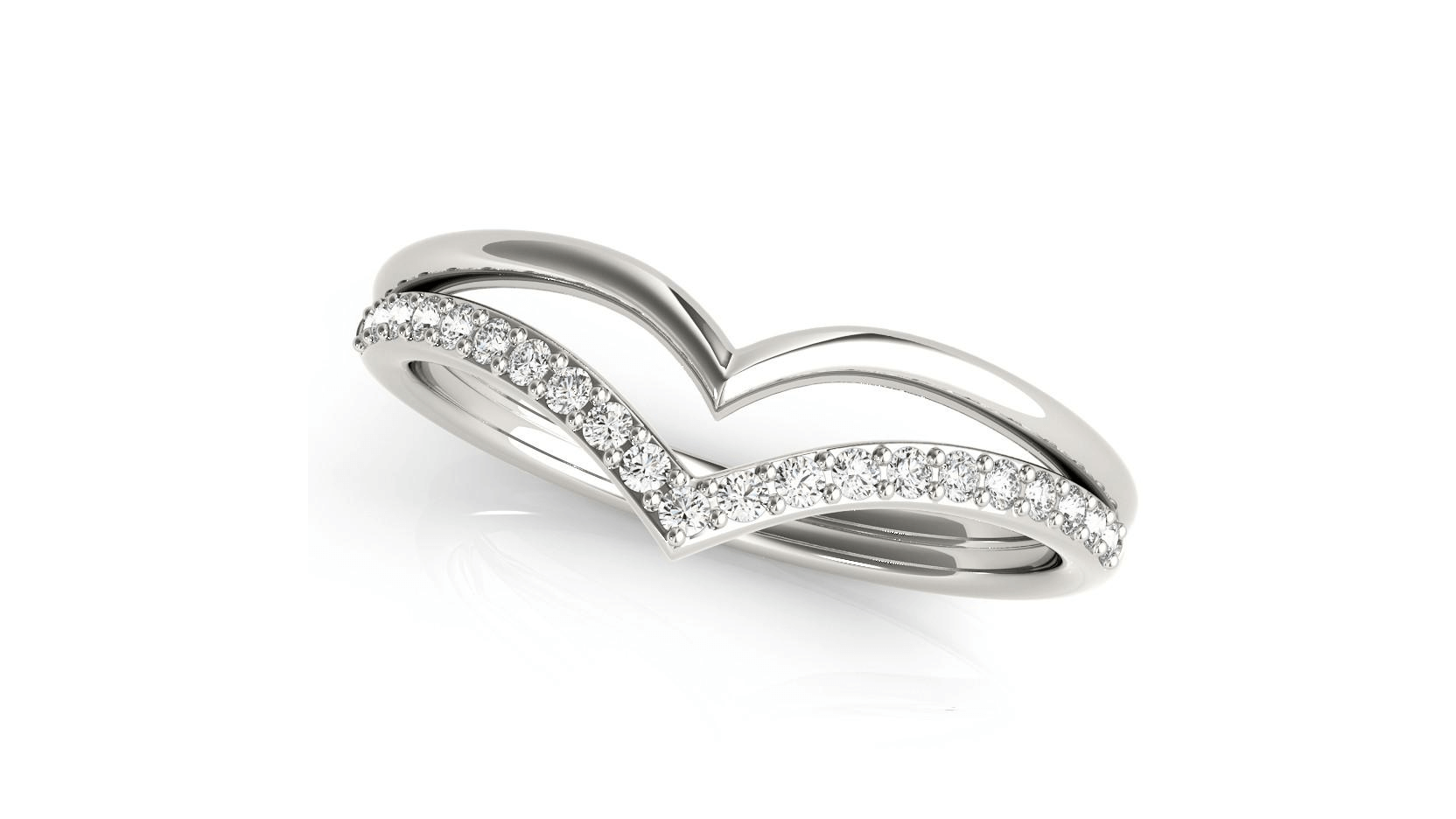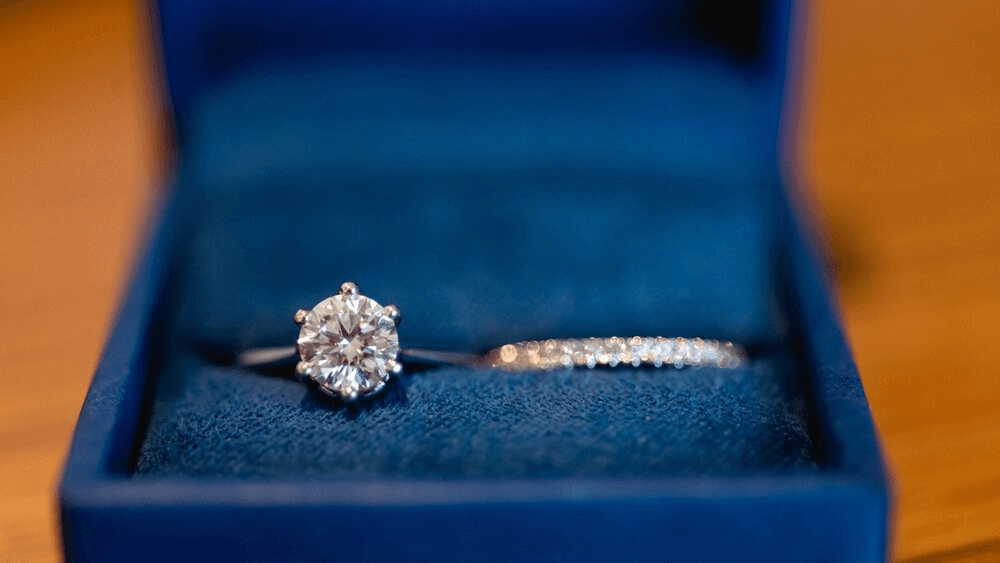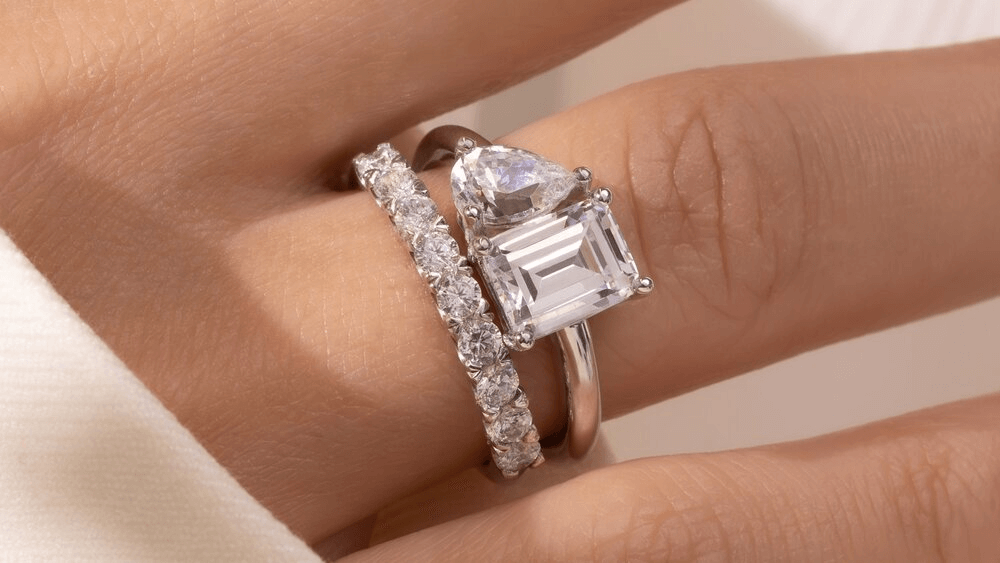Eternity Rings: A Comprehensive Guide to Forever and Always

By Gary A.

Edited by Olivia H.
Published Nov 14, 2021
Edited on Dec 18, 2024
With their unbroken circle of diamonds, eternity rings symbolize endless love and devotion, making them the perfect way to celebrate life’s special milestones.

Navigate this guide:
- 7 Quick Tips for Purchasing and Examining Eternity Rings
- Introduction to Eternity Rings
- Eternity Ring vs Wedding Band: Understanding the Difference
- Design Aspects of Eternity Ring
- Wearing an Eternity Ring: Guidelines and Tips
- Understanding Price Factors
- Our Expert Take
- 10 FAQs
Before we dive deeper into the specifics, here are some practical tips to help guide your decision-making process:
7 Quick Tips for Purchasing and Examining Eternity Rings
- Tip 1: Understanding Diamond Quality Clarity and Color: Look for diamonds with minimal inclusions. Clarity grades like VS1 or VS2 offer a good balance between quality and cost. Color grades around G to I provide a near-colorless appearance without the premium price of higher grades. Cut: A well-cut diamond ensures maximum brilliance and sparkle. Even if other characteristics are high, a poor cut can make a diamond look dull.
- Tip 2: Assessing the Ring Setting Prong Setting: Ensure the diamonds are securely held in place. Loose prongs can lead to lost stones. Smoothness: Run your fingers over the ring to check for any rough edges. A well-crafted ring should feel smooth and comfortable.
- Tip 3: Checking the Band’s Durability Material Strength: Platinum and gold (14K or 18K) are strong choices for an eternity ring. Platinum offers high durability, while gold is a classic choice. Band Thickness: A thin band may look elegant but can be less durable. Consider a balance between aesthetics and longevity.
- Tip 4: Sizing and Comfort Correct Sizing: Since resizing eternity rings can be challenging, ensure the ring fits comfortably from the start. Comfort Fit: If the ring will be worn daily, opt for a comfort fit design which has a rounded inside edge.
- Tip 5: Considering the Style and Wearability Lifestyle Suitability: Consider the wearer’s lifestyle. If they have an active lifestyle or job, a ring with a lower profile and secure setting is ideal. Matching Existing Jewelry: Think about how the eternity ring will complement existing engagement or wedding rings.
- Tip 6: Evaluating the Gemstone Layout Full vs Half Eternity: Decide between a full or half eternity ring. Full eternity rings have gems around the entire band but can be more expensive and less practical for everyday wear. Stone Alignment: Check that the gemstones are evenly aligned with no gaps or misalignments.
- Tip 7: Warranty and Aftercare Warranty Coverage: Look for rings that come with a warranty, covering any potential repairs or maintenance. Aftercare Services: Enquire about services like cleaning, inspections, and repairs. Regular maintenance will keep the ring in prime condition.
Now that you’ve got these practical tips, use Jeweler AI below to find the perfect engagement ring that suits your style and budget:
Introduction to Eternity Rings
While promise rings, engagement rings, and wedding bands may steal the limelight when it comes to the romance of fine jewelry, the significance of eternity rings also holds a very special place in our hearts – even if we can’t all agree on their exact meaning.
Delicate, meaningful, and, of course, beautiful, presenting your partner with an eternity ring is a great way of completing her bridal jewelry set, and marking another special moment in your lives together.
Still, the expectation for eternity rings is nowhere near as clear as it is for an engagement ring or wedding band. Here’s everything you need to know, all in one place.
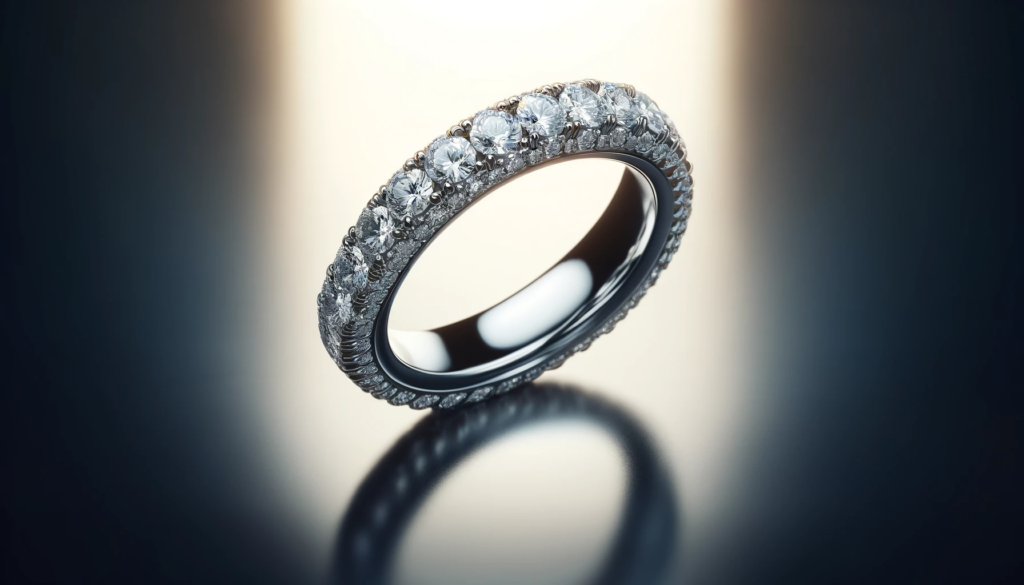
The Essence of Eternity Rings
Eternity rings are rooted in ancient customs and rituals, although their precise meaning – and significance for couples – has changed dramatically over the years. This is, of course, part of their charm: commitment and love can be celebrated at any point in a couple’s relationship, and the eternity ring is the perfect symbol of that celebration.
Symbolism and Significance
As the name suggests, an eternity ring is intended to signify your endless love and devotion to your partner, although the reasons for giving it differ from person to person.
As is the case with wedding bands, the unbroken circle of the eternity ring’s band represents endlessness, while the small diamonds found along its edge represent love itself.
Eternity Ring vs Wedding Band: Understanding the Difference
The key difference between an eternity ring and a wedding ring is timing: a wedding ring is given at the wedding to symbolise a new marriage, and an eternity ring is given sometime later.
Design and Symbolism
Traditionally, an eternity ring typically features a full or half-pavé band, with no center diamond. It is intended to sit comfortably alongside the engagement ring, much like the wedding band, without rivalling it for space or attention on the finger.
Traditionally, the eternity ring was intended to be a gift presented after ten years of marriage, but this tradition has been modified and adapted by many, many couples over the years. For this reason, it is now seen as a fitting commemoration of the moment a couple become parents together and a new symbol for their growing family.
The most important thing to remember is that there are no rules when it comes to eternity rings. Their meaning is open to interpretation, although their significance will always remain high.
Design Aspects of Eternity Ring
Unlike an engagement ring, an eternity ring is not subject to the same level of secrecy and surprise, so many couples choose to pick out this ring together.
Then again, you might be intending to surprise your partner with an eternity ring as a holiday, birthday, or anniversary present. In which case, you’ll want to consider many of the same details that would have applied when you picked out her engagement ring:
- Setting Style
While channel set and pavé rings may sound similar, they’re actually very different. One is better suited to creating a dazzling, all-round sparkle, while the other is better suited to showcasing a more unusual cut without adding extra metal between the stones. - Full or Half Pavé?
Don’t be deterred by the phrase ‘half eternity’ – these rings are still as meaningful and special as a full band of diamonds. - Metal Color
While, traditionally, the eternity ring features a full pave – meaning that those melee diamonds will represent the focal point of the ring – your choice of metal will still peak through the sparkle and impact the ring’s appearance.
Most people will choose the same metal they used in the design of their partner’s engagement ring and wedding ring – or, of course, promise ring.
Platinum is the most expensive option, but it boasts a brighter shine than white gold, but can’t rival the romantic, warm hues of yellow or rose gold if that - Size
By now, chances are that you know your partner’s ring size. It’s important to keep in mind, however, that pavé or channel set rings are very difficult to resize, so ensuring you’ve got the right fit before the ring is made is essential. - Budget
There’s no price limit for eternity rings, and, as with any piece of diamond jewelry, it’s easy to run up the cost significantly. Consider your budget, and use that as a guide.
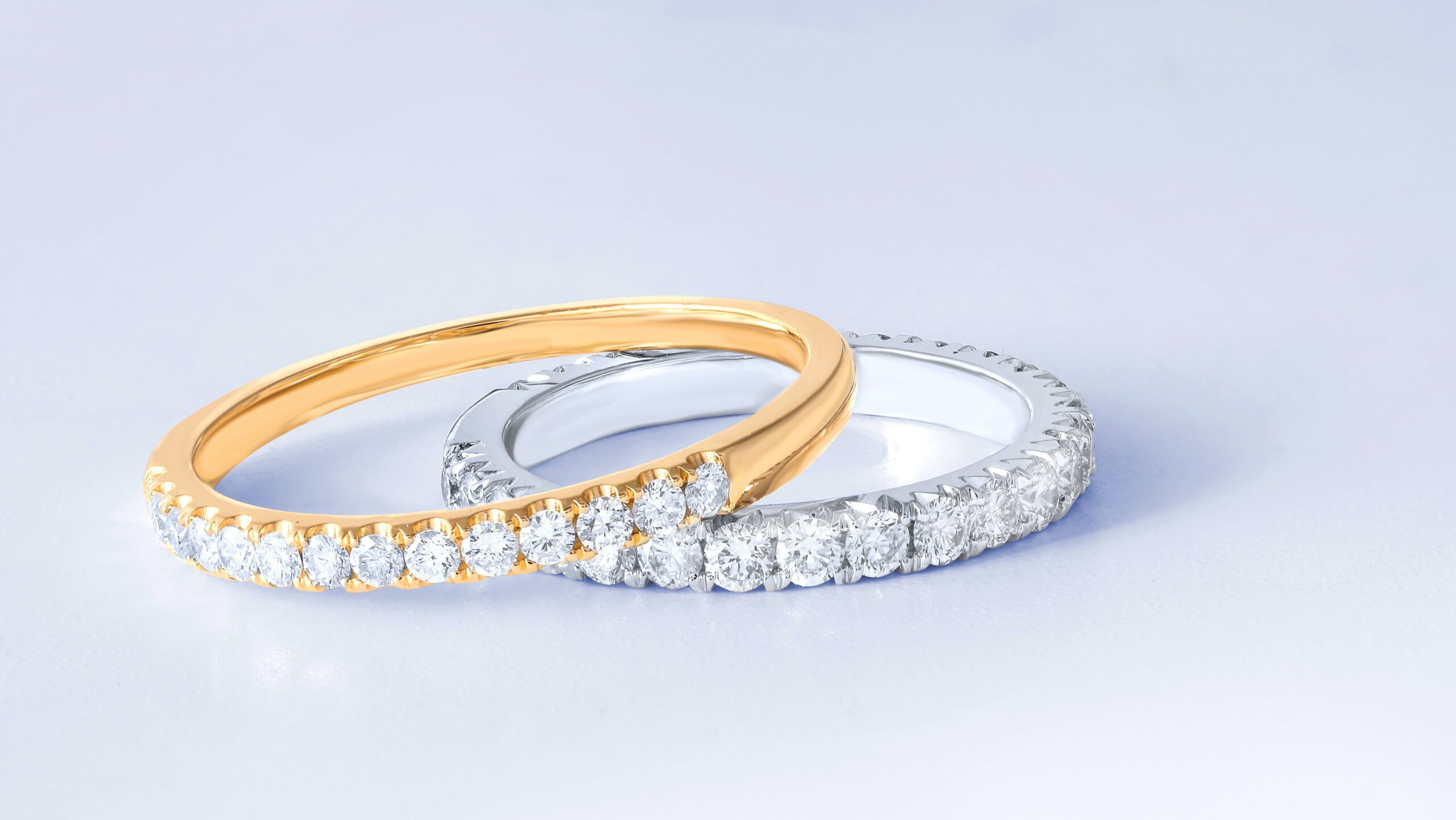
Exploring Various Styles
A pavé setting will capture the perfect combination of sparkle and subtlety that eternity rings tend to carry, although you do have other options that will produce similar results.
Pavé is a French term meaning ‘pavement’, and refers to a band that has been paved with many small diamonds (known as melee diamonds). In pavé, the diamonds are often Round Brilliant or Oval in shape, and are held in place by incredibly small prongs – sometimes known as beads’.
While Round Brilliant melee diamonds appear the most traditional, some buyers prefer to use diamonds of other shapes, like the Princess or Emerald. In these cases, a channel setting is often used instead, where the diamonds are held in place by a small channel within the band, rather than prongs.
Both create beautiful, though very different, results. Keep in mind that, just because the pave setting is the most traditional, that’s not to say it’s the best choice for your partner.
The half-pavé is a simple modification of the eternity ring, featuring melee diamonds on the upper half of the band.
Whether you opt for a half eternity ring, or a full band of diamonds, the meaning remains the same. This is simply down to the preference of the wearer and is often chosen as a more comfortable alternative to a full band of diamonds.
Gifting Eternity Rings: When and Why
While there is no specific time, most people regard two important milestones – a special wedding anniversary, or the birth of the couple’s first child – as the ‘right time’ for the ring to be given.
While many still choose to mark a wedding anniversary with an eternity ring, you might choose to commemorate a milestone in your relationship before you get engaged – or at the arrival of a new baby.
It all depends on your relationship, and how traditional your partner’s approach to the stages of a relationship is. If you think a ring box is going to set her head spinning, then we would recommend that you think about getting a promise ring instead. This represents a milestone in and of itself, and one more fitting if you’re planning on getting married further down the road.
Wearing an Eternity Ring: Guidelines and Tips
Traditionally, the eternity ring is worn on the left ring finger, on top of both the engagement ring and the wedding band.
The wedding band is worn closest to the heart, with the engagement ring in the middle. Together, the three rings represent the three most important milestones in any couple’s life together.
Then again, for some women, wearing three rings on one finger is not the most comfortable. If her engagement ring features a particularly large setting or diamond, then you might consider getting her eternity ring specially designed to fit around the engagement ring as part of a bridal set.
If you’re not sure that’s going to work, then we’d recommend going with the traditional design and simply wearing the eternity ring on a different finger.
Understanding Price Factors
As with an engagement ring, there is no specific price anyone should pay for this piece of jewelry. Most eternity rings cost between $1,500 and $3,000, but they can cost significantly more for pieces with a higher CTW.
When it comes to eternity rings, CTW, or Carat Total Weight, is a very important subject to understand. Unlike rings that feature one solitaire diamond at the center, the value of eternity rings will be determined by the total weight of every melee diamond used in the band.
This can vary from less than ten to twenty, thirty, forty, or even more – depending on the size of the diamonds chosen, and how many rows are used.
The traditional design of an eternity ring features one or more rows of melee diamonds set within the band – but, beyond that, the specifics of the design are simply down to personal preference.
A CTW of, say, 0.5 tends to cost less than a 0.5 carat diamond, so these rings are often significantly less expensive than engagement rings, but a high CTW will mean spending substantially more on your ring.
Our Expert Take
Eternity rings are a beautiful symbol and a wonderful gift idea for your partner – whether you’re approaching a milestone anniversary or celebrating a new addition to the family.
As with any piece of fine jewelry, you want to invest in the craftsmanship that goes into it as much as the materials themselves. Our own rings are designed by a jewelry maker known for high standards and quality assurance, so you can be sure that the ring will be beautiful and well-made, no matter which one you choose to go for.
10 FAQs
- Q: What is an Eternity Ring?
- A: An eternity ring is a band with a continuous line of identically cut gemstones, symbolizing never-ending love and commitment.
- Q: When is an Eternity Ring Given?
- A: Eternity rings are often given for significant anniversaries, the birth of a child, or any special milestone in a relationship.
- Q: What’s the Difference Between Full and Half Eternity Rings?
- A: A full eternity ring has gemstones around the entire band, while a half eternity ring has stones only on the front half of the band.
- Q: Can Eternity Rings Be Resized?
- A: Resizing eternity rings can be challenging, especially full eternity rings, due to the continuous stones. Accurate sizing is crucial.
- Q: How Do I Choose the Right Eternity Ring?
- A: Consider factors like gemstone type, band material, full vs. half eternity, lifestyle compatibility, and matching with existing jewelry.
- Q: Are Eternity Rings Comfortable for Daily Wear?
- A: Comfort depends on the ring design. Half eternity rings and those with smoother settings are generally more comfortable for daily wear.
- Q: Can Eternity Rings Be Worn with Other Rings?
- A: Yes, they are often worn alongside wedding and engagement rings, but can also be worn alone or stacked with other bands.
- Q: How to Clean an Eternity Ring?
- A: Use a soft brush, mild soap, and warm water. Regular professional cleaning is recommended for maintaining sparkle.
- Q: What’s the Best Material for an Eternity Ring?
- A: Platinum and gold (14K or 18K) are popular due to their durability and appearance. The choice depends on personal preference and lifestyle.
- Q: Is There a Specific Finger for Wearing an Eternity Ring?
- A: Traditionally, it’s worn on the ring finger of the left hand, but there are no strict rules. It can be worn on any finger that feels comfortable.
FOLLOW-UP GUIDE SERIES

